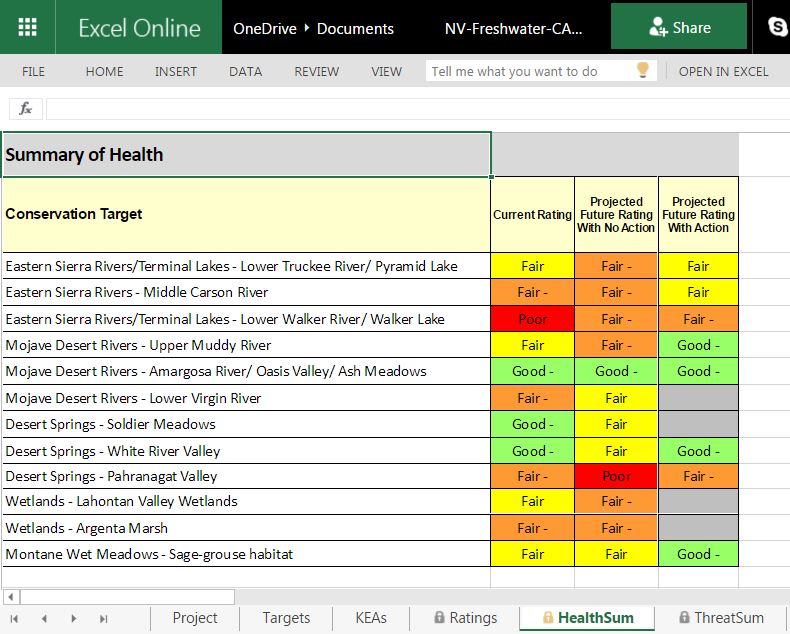Story from Greg Low, Applied Conservation.
Nevada is the driest state in the U.S., but ranks 11th in species diversity, including over 150 endemic species that depend on freshwater ecosystems. To identify effective strategies to abate threats to these ecosystems, The Nature Conservancy’s Nevada team developed a statewide Conservation Action Plan. To develop the plan, the team worked through the Open Standards process using the new Excel Online Workbook created by veteran CCNet coach Greg Low. The online platform and web-based workshops made it easy for the team to work individually and in small teams. During the planning process, the team looked at how pursuing different strategic conservation actions would affect the future health of the major ecological attributes of important freshwater ecosystems.
The team identified five major types of freshwater ecosystems in Nevada as conservation targets:
- Great Basin rivers
- Mojave Desert rivers
- desert springs
- freshwater wetlands
- montane wet meadows
To assess the health of these ecosystems, the team rated five key ecological attributes:
- flows
- riparian vegetation
- native aquatic animals
- physical integrity
- water quality
To view the Online Workbook for Nevada’s freshwater Conservation Action Plan, contact Greg Low. For a blank workbook and instructions on using it for your conservation plans, see http://appliedconservation.com/resources.

